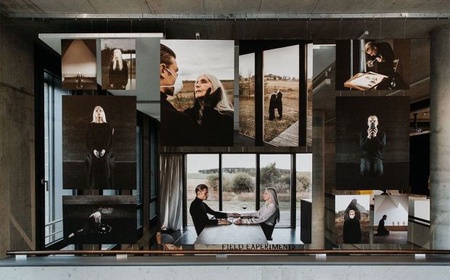A few weeks ago I wrote a blog post about my North American adventures in creative science communication, and I’m back this week to tell you all about the second leg of my Winston Churchill Memorial Trust Fellowship travels. Since I last wrote, I’ve spent a weekend in Berlin, and battled jet-lag of epic proportions as I then flew to Singapore, and then on to Hong Kong.
I’m now back at the University and working on new trial methodology projects at the Health Services Research Unit, so I thought I’d use this opportunity to reflect on the second leg of my Fellowship, along with some ideas on what I’m going to be doing over the next few months – a Fellowship is for life, not just for travelling!
Between ‘big’ Fellowship trips, I spent a weekend in Berlin, Germany. I travelled there as I wanted to visit STATE Studio, a public gallery, showroom and event space that was established on the back of STATE Festival; Berlin’s festival for open science, art and society. In the words of STATE, “It’s a place for creative synergies between science, art, and innovation to discover and explore the breakthrough developments that shape our future.” I left the studio feeling inspired, and brimming with ideas for new, creative, public engagement activities that I could use to increase awareness and conversation around my own work. The exhibit that has stuck in my mind most since I left Berlin, was a photography exhibition that looked at the potential societal impact of gene editing using CRISPR technology. Artist Emilia Tikka took part in one of STATE’s artist in residency programmes, which saw her work with scientists at the Max Delbrück Center for Molecular Medicine (MDC). She then worked with photographer Zuzanna Kaluzna to create the ‘ÆON- Trajectories of Longevity and CRISPR’ exhibition. The duo worked to tell the fictional story of a potential future; a couple are given the choice to defy the ageing process – the man agrees to, and inhales the CRISPR therapy, the women does not. The resulting images are confronting as you see the consequences of their decisions – the man ceases to age, and the woman continues to do so.
After that whirlwind visit to Berlin, I travelled to Asia – where the science communication landscape is completely different to the comparatively developed scenes in the UK, Europe and North America.
What I found particularly interesting about Singapore (my first stop), is that they have the first ArtScience Museum in the world; a massive, clearly expensive museum with 21 gallery spaces, that sits in the heart of Marina Bay Sands in the Downtown Core of Central Singapore. The museum has a permanent exhibition called the ArtScience Gallery, but the main attraction are the touring exhibits that are curated by other museums and design collectives. Many of the touring exhibits are curated by art collective teamLab, an interdisciplinary group of ‘ultratechnologists’ whose collaborative practice seeks to navigate the confluence of art, science, technology, design and the natural world. I found the teamLab exhibitions to be a really brilliant way of engaging people, particularly children; the exhibits were truly interactive, and I spent lots of time not only interacting with it myself, but watching how others interacted with it too.
My main takeaway from Singapore was that science communication activities are modern in that they tend to use technology in a more advanced way than other places that I’ve been, but that the sites and areas where these engagements are taking place are actually quite far behind the UK. We’re lucky in Aberdeen (and the wider UK, USA and Canada) in that we have lots of grassroots science communication and education collectives (e.g. Soapbox Science and Pint of Science) that are working to innovate and bring science to the public in new places. I found that in Singapore these hugely advanced exhibits were in expected places only – which may mean that the engagement is good because people are self-selecting and attend these events as they are already interested. I’ll be interested to see how this landscape changes over the coming years, it’d be amazing to see the tech-driven activities taken into unexpected places!
I finished my Fellowship travels in Hong Kong – probably the busiest place I’ve ever been, but one of the most amazing too. I used my few days there to visit Hong Kong Science Museum, but also to use it as a base for a day trip to visit giant pandas at Shenzhen Wildlife Park in Guangdong province, China. Giant pandas are no longer classified as ‘endangered’ animals, having been downgraded to ‘vulnerable’ on the global list of species at risk of extinction after their population increased by 17% in a decade. This increase in population is thought to be, at least in part, a result of increased public education and awareness that has facilitated significant volumes of research funding, and I was therefore interested in how the team of panda specialists in Shenzhen are educating and engaging the public with these (super cute!) animals.
Heidi is now back at HSRU and working on new trial methodology projects, but she will be sharing her research findings in more detail through presentations – if you’d like to hear more about Heidi’s work, please get in touch, she’d be happy to present her research to other research groups.


